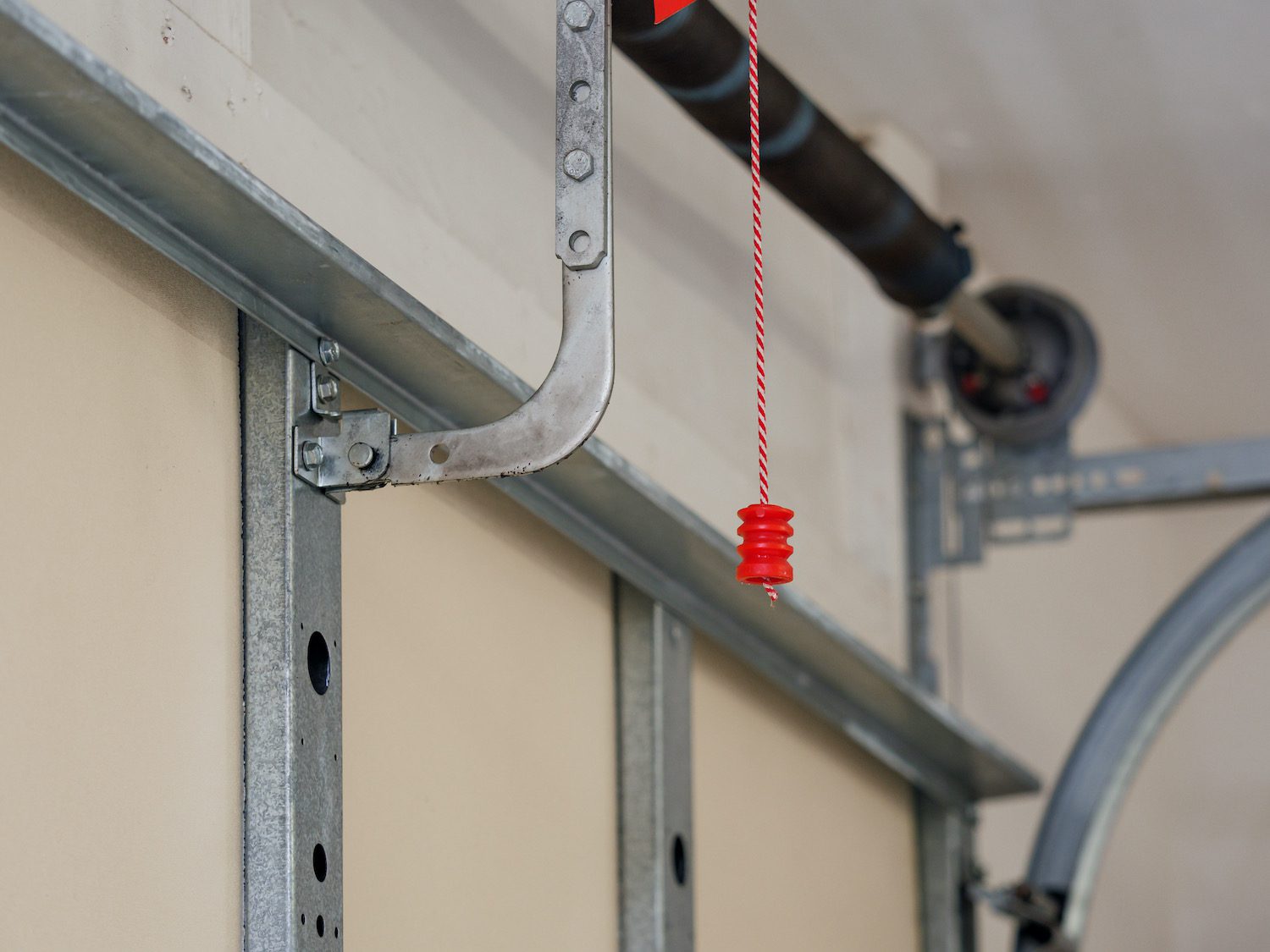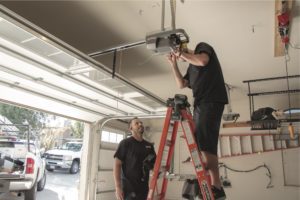
If your garage door won’t open after pulling the red emergency release, there are several potential reasons why this could be happening. The red emergency release cord on a garage door system is a crucial feature designed to disengage the door from the opener, allowing you to manually move the door during power outages, malfunctions, or emergencies. However, when the door doesn’t open even after pulling this cord, it could indicate a few issues.
Understanding the Red Emergency Release
What It Is: The red emergency release cord is a safety mechanism that allows you to manually operate your garage door during power outages or when your garage door opener fails.
The Mechanics Behind It: Pulling the cord disengages the door from the powered carriage, but it should still allow you to open and close the door manually.
How to Release and Reset the Emergency Cord on a Garage Door
Ensure the Door is Closed Before detaching your garage door opener, make sure the door is securely closed. Attempting to unhook the opener with the door in an open position can be hazardous due to the potential for a sudden and forceful closure, especially if there is a broken spring involved.
Activate the Emergency Release The red emergency release cord, hanging from the door’s trolley, allows manual control over the garage door when the automatic opener is disconnected. This trolley, which moves with the door, links to the opener carriage that propels the door along the track. When the cord is pulled, it releases the trolley from the opener carriage, enabling manual operation of the door.
Operate the Door Manually and Reset Once the emergency release is activated, you can manually open and close the door. Remember to bring the door back to the closed position before attempting to reconnect the automatic opener.
Re-engage the Trolley The trolley can be either engaged or disengaged from the opener carriage. To re-engage it after manual operation, pull the emergency release cord towards the door, which adjusts the spring lever to its connected position.
Reconnect the Trolley to the Opener Carriage You can reconnect the trolley to the opener carriage either by manually moving the door until the trolley clicks back into place or by using the garage door opener’s remote to automatically re-engage the two components. Ensure you hear the click to confirm they are securely reconnected, readying the system for automated use again. Some garage door openers may require a reset after such an event. Refer to your opener’s manual for the correct procedure. Typically, this might involve unplugging the opener for a few seconds or pressing a reset button.

Possible Issues and Tips
1. Track and Roller Issues
- Misalignment: A door that’s come off its track can’t glide smoothly.
- Debris: Even small stones or hardened dirt can halt a garage door’s movement.
- Wear and Tear: Over time, tracks and rollers can wear down, requiring adjustment or replacement.If the tracks on your garage door are misaligned,it can be risky to open the door using the emergency release cord. Misaligned tracks could cause the door to get stuck or, worse, to come off the tracks entirely, which could lead to the door falling. This is particularly dangerous if the door is partially or fully open when the tracks fail.Here are some safety precautions:
- Close the Door: If possible, the door should be closed before using the emergency release cord. This minimizes the risk of the door falling due to gravity.
- Inspect Visually: Before pulling the cord, inspect the tracks for gaps, bending, or other obvious signs of damage. If the damage is severe, it’s best not to attempt to move the door at all.
- Stabilize the Door: If the door must be opened (for example, to get a vehicle out), it should be done by two people if possible, one on each side to stabilize the door as it moves.
- Stay Clear: Always keep your body and objects clear of the door’s path when attempting to open or close it manually.
- Support the Door: If you do manage to open the door, ensure it is securely supported and will not slide down unexpectedly before passing under it.
However, the safest option is to call a professional garage door service technician. They have the experience and tools required to realign the tracks safely and repair any damage. Handling misaligned tracks without the proper knowledge can lead to further damage or personal injury.
If you’re experiencing issues with your garage door rollers, such as them being worn, damaged, or out of track, it can be unsafe to open your garage door with the emergency release cord. The rollers are essential for the smooth operation of the door as they guide it along the tracks. Here are some considerations:
- Door Position: If the door is closed and the rollers are still somewhat in track, you may be able to use the emergency release cord to manually open the door. However, you must be cautious and ready for resistance or other issues.
- Roller Condition: If the rollers are visibly damaged or out of the tracks, manually opening the door can cause further damage or result in the door becoming completely detached.
- Manual Operation: When operating the door manually, do so slowly and with control. If you encounter significant resistance or if the door becomes harder to move, stop immediately.
- Secure the Door: If you manage to get the door open, ensure it stays open and is securely propped before attempting to pass under it. Do not rely on the automatic opener to hold the door open if the emergency release cord has been pulled.
The safest course of action when dealing with garage door roller issues is to contact a professional. They have the necessary tools and expertise to safely repair or replace the rollers and any other damaged components of the door system. Attempting to force a door with roller issues can result in injury or further damage to the door.
Why Is My Garage Door Off its Tracks
2. Spring and Cable Failures
- Broken Torsion Springs: If your springs are broken, your door will feel incredibly heavy.It is not advisable to open a garage door with the emergency release if there is a broken spring. The springs on a garage door are under high tension and are crucial for balancing the weight of the door. When a spring is broken, the full weight of the door is unsupported, making it extremely heavy and dangerous to lift manually. Attempting to open the door under these conditions can lead to personal injury or further damage to the door and its components.If you suspect a broken spring, the safest course of action is to leave the door closed and call a professional garage door repair service. They have the tools, knowledge, and safety training to handle high-tension components like garage door springs safely.
- Cable Wear: Frayed or snapped cables can be dangerous and need immediate attention.You can use the emergency release cord to manually open your garage door if your cables are frayed, but it is important to exercise extreme caution. Frayed cables can snap without warning, and since they are part of the system that balances and moves the garage door, this can lead to unpredictable and potentially dangerous situations. The door could fall or move in an uncontrolled manner, posing a risk of injury or damage.If you decide to proceed:
- Ensure the door is in the closed position to prevent it from crashing down if a cable snaps.
- Pull the emergency release cord to disconnect the door from the opener.
- Lift the door manually with even force on both sides.
- Secure the door in the open position before attempting to pass under it.
Given the risks associated with frayed cables, it’s strongly recommended to contact a professional garage door repair service to handle the repair. They have the tools and expertise to do the job safely.
Why Does a Garage Door Spring Break
3. Locks and Latches
- Manual Locks: Accidentally engaged manual locks can prevent the door from opening.
- Security Features: Some modern doors have built-in security devices that may need resetting.
4. Obstructions and Blockages
- Physical Blockages: Sometimes, what’s stopping your door is as simple as a broom handle stuck in the track.
- Sensor Blockages: Modern doors have safety sensors that can halt operation if they detect an obstruction or are misaligned.Using the emergency release cord on your garage door will not cause your safety sensors to stop working. However, it will disconnect the door from the automatic opener mechanism, which means the safety sensors will not stop the door from closing if there’s an obstruction since the opener is what the sensors communicate with to prevent the door from closing when there’s something in the way.Here’s how the process typically works:
- Emergency Release Activation: When you pull the emergency release cord, you disengage the garage door from the automatic opener. This allows you to manually move the door up and down without the aid of the opener.
- Safety Sensor Function: The safety sensors are part of the automatic opener system. They are designed to send a signal to the opener to stop or reverse the door if an object interrupts the beam between the sensors while the door is in motion.
- Manual Operation: With the door disengaged from the opener, the safety sensors are essentially bypassed because you’re moving the door manually. They won’t stop the door from closing on an object or person while you’re moving it.
- Re-engagement: After using the emergency release cord, once you re-engage the garage door with the automatic opener (which often involves pulling the cord again, aligning the trolley, and ensuring it locks back into place with the opener’s mechanism), the safety sensors will resume their normal function.
Therefore, while the emergency release cord itself doesn’t disable the sensors, it temporarily renders them non-functional because they only work when the door is connected to the opener. Always ensure that the path is clear before manually moving the garage door to prevent any accidents.
5. Emergency Release Misuse
- Improper Engagement: If the emergency release isn’t re-engaged correctly, the opener won’t operate the door.
6. Opener Motor Complications
- Electrical Issues: Even after disengaging the door, a faulty motor can prevent manual operation.
- Remote Problems: Sometimes the issue is with the remote or the wall switch, not the door itself.When you use the emergency release cord, you are disconnecting the garage door from the opener mechanism. This means that any commands from the remote will not affect the door’s operation until you re-engage the door with the opener.Here’s what happens:
- Disconnection: Pulling the emergency release cord disengages the trolley, which is the component that connects the door to the motorized opener. This allows for manual operation of the door.
- Remote Inactivity: While the door is disengaged, using the remote will not open or close the door because the opener is not physically connected to the door.
- Motor Response: If you press the remote while the door is disengaged, the opener may still run, but since it’s not connected to the door, the door won’t move.
- Re-engagement: To use your remote again to operate the door, you must first re-engage the trolley with the opener carriage. This usually involves pulling the emergency release cord in the opposite direction or running the opener until it re-engages automatically when you manually move the door to the correct position.
So, while the remote will still send signals to the opener, it will not move the garage door until the door and opener are reconnected.
7. Balance and Alignment
- Door Balance: A poorly balanced door can be too heavy on one side, making it difficult to lift manually.
Why is My Garage Door Unbalanced
8. Sensitivity and Limit Settings
- Opener Settings: Incorrectly configured settings can prevent the door from operating correctly.Using the emergency release cord on your garage door does not impact the sensitivity and limit settings of your garage door opener. These settings are programmed into the opener and are not altered by manually disengaging or engaging the garage door.Here’s a brief overview:
- Sensitivity Settings: These control how much force the opener applies to open or close the door before it reverses direction. They are designed to prevent the door from causing injury or damage if it encounters an obstruction.
- Limit Settings: These tell the opener how far to move the door to fully open or close it. They ensure the door closes or opens completely without slamming into the ground or the top of the garage.
When you pull the emergency release cord:
- The physical connection between the door and the opener is disengaged.
- The opener’s settings (including sensitivity and limits) remain programmed and unchanged.
- When you reconnect the door to the opener, it should operate according to the existing settings.
After re-engaging the door with the opener, if the door doesn’t operate as it did before or you notice any irregularities, it may be necessary to check the settings. Sometimes, after manual operation, you might need to reset or reprogram these settings if the door does not open or close properly. However, this would not be due to the use of the emergency release cord but could be a sign of another underlying issue that needs attention.
9. General Wear and Tear
- Component Fatigue: All mechanical parts have a lifespan and may need replacement.

Step-by-Step Troubleshooting
- Visual Inspection: Check for obvious signs of damage or blockage.
- Track and Roller Examination: Look for misalignment and clean out debris.
- Spring and Cable Check: Visually inspect for breaks – do not touch!
- Lock Verification: Ensure no manual locks are engaged.
- Obstacle Scan: Look for and clear any physical or sensor obstructions.
- Emergency Cord Check: Make sure it’s re-engaged correctly after pulling.
- Motor and Remote Testing: Try operating the door with the wall switch.
If you’ve gone through these steps and your garage door still won’t open after using the red emergency release, or if you’re uncomfortable performing any of these actions, it’s time to call a professional. Garage door systems are under high tension and can be dangerous.
A garage door that won’t open after pulling the emergency release can be symptomatic of a variety of issues. While some can be addressed with a bit of DIY, others will require professional expertise. Regular maintenance and awareness can prevent many problems, but when in doubt, always opt for safety and call a professional.
Preventive Maintenance
Regular maintenance is key to preventing these issues:
- Lubrication: Keep all moving parts well-lubricated.The best type of lubricant to use on garage door moving parts is a silicone-based or lithium-based grease. These lubricants are specifically designed for high-pressure areas and provide a durable, non-sticky layer that protects against rust and reduces friction. Silicone spray is ideal for wide-ranging temperature conditions and doesn’t attract dirt, making it suitable for tracks, rollers, and hinges. Lithium grease, which is thicker, is perfect for coating and protecting metal parts like springs and screw drives from corrosion. Always choose a product labeled for garage door or gate use to ensure compatibility and effectiveness.WD-40 is often thought of as a lubricant, but it is primarily a solvent and rust-dissolver. It’s great for cleaning and removing rust from metal parts, but it doesn’t provide the necessary lubrication for the moving parts of a garage door. Using it on rollers, hinges, and springs can actually strip away existing lubrication, leading to increased friction and wear over time. It can also attract dust and debris, which can further compound the problem. Instead, it’s recommended to use a lubricant specifically designed for garage doors, which will provide long-lasting, appropriate lubrication to ensure smooth operation and prolong the life of the door’s moving parts.
- Tightening: Regularly check and tighten all hardware.
- Balance Tests: Perform balance tests periodically.
- Professional Inspection: Have your door system inspected by a professional once a year.

Need Professional Garage Door Services? We’re Here to Help!
Don’t let garage door troubles leave you stranded in your own home. At Overhead Door Company of Huntsville/North Alabama™, we understand the importance of a fully functional garage door for your safety and convenience. Whether it’s a misaligned track, a broken spring, or an emergency release issue, our team of expert technicians is equipped to handle all your garage door needs.
Prompt, Reliable, and Professional Service:
- We offer comprehensive diagnostics to pinpoint the exact issue with your door.
- Our experienced technicians provide swift and efficient repairs and replacements.
- We ensure every job is done right the first time, giving you peace of mind.
Safety First:
- Garage door systems can be dangerous to work with. Let our trained professionals safely manage any repairs or maintenance, keeping you and your family safe.
Don’t wait for a small inconvenience to turn into a major problem. Contact Overhead Door Company of Huntsville/North Alabama™ today at 256-772-3674 for all your garage door installation, repair, and maintenance needs. Trust us to get your garage door back on track!
For more troubleshooting tips visit our Troubleshooting Guide!
Reach Out To Us to Schedule a Service Call
Safety Precaution
Before going any further, we want to be clear. Garage doors can be dangerous, and it’s not uncommon for people to get injured while attempting any garage door repairs. Even experienced technicians with years of experience should work with caution, as it is in the highest insurance classification for a work-related injury. This is not a garage door safety guide and cannot account for every garage door situation. Always proceed with caution. When in doubt, leave the job to garage door professionals. They are familiar with the dangers of working with a garage door, hardware, and all of its moving parts.
If you decide to operate the garage door manually, we recommend that you either close or brace the door before pulling the release cord and that nothing is in its operating path. If you attempt any adjustments, do not loosen or remove any part of the door or hardware that is under spring tension or the weight of the door. Make sure the door is not jammed. Check that its path is clear and unobstructed before operating the motor.



